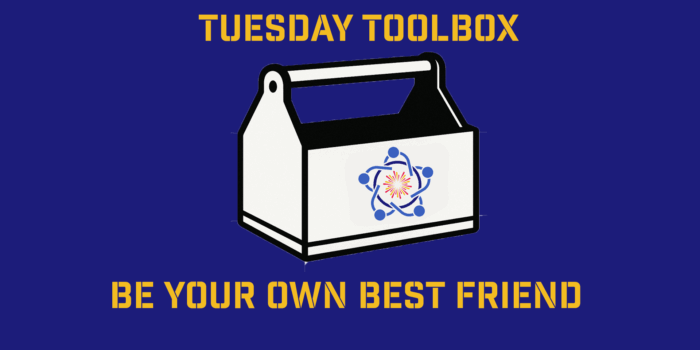My Wednesday Wish for You: To Be Your Own Best Friend We often push ourselves harder than anyone else ever…
Local Alb CEO shares some digital missteps to avoid in this Fast Company article.
The fourth industrial revolution is here. Advances in big data, artificial intelligence (AI), the Internet of Things (IoT), and high-performance computing are changing the way organizations compete and evolve. In this new age, winners and losers will be decided based on how quickly they can see trends and disrupt industries.
If you look at organizations that can predict needs and get products to market faster, they’re having exponential results. Take UPS, which developed a data and AI-driven system to create optimal routes and increase delivery speed. As a result, the company improved customer experience, cut fuel costs, reduced emissions, and now saves an estimated $300 to $400 million annually. Meanwhile, the Postal Service is struggling to keep up.
Technological innovations have always given some an edge while leaving others behind, and because COVID-19 sped up digital transformation, we’re now in an environment where keeping up with modern technologies is essential. In fact, 79% of executives reported an increase in digital transformation budgets in response to COVID-19, and 69% of companies surveyed indicated they will spend the same amount or more on such efforts this year as compared to 2021.
Such efforts range from health systems increasing telehealth offerings to firms investing in agile supply chain management and companies adopting new digital tools to enable remote collaboration.
To stay ahead of the curve, I suggest looking at your own processes and identifying how you can harness the power of big data, AI, and other transformative technologies that can take your organization to the next level.
So how do you prepare for a digital transformation journey? Here are four mistakes to avoid and tips for getting started.
MISTAKE #1: NO CLEAR GOALS FOR DIGITAL TRANSFORMATION
One common mistake is failing to set clear, measurable goals for digital transformation efforts. To help define your vision, start by asking, “What would you do if you knew?”
What do you wish you knew about your customers? What data or automations could you use to improve efficiencies? How could higher confidence and more precision in your decisions help make a bigger impact?
By considering the question most pertinent to your organization, you can start to uncover areas of opportunity that data, analytics, and digitalization can capture. Take the time upfront to identify the real question you’re trying to address and set yourself on a clear path.
MISTAKE #2: NOT UNDERSTANDING THE DATA AVAILABLE TO YOU
There’s a statistic I like to quote: 90% of the world’s data was created in the past two years, but we only use a fraction of it. The second common mistake in digital transformation and data maturation initiatives: not tapping into the data that is relevant and available to you.
First, identify the data you have within your organization. You’re probably already capturing rich data sets about your customers, products, supply chains, and more. Information may be trapped in silos, but it can be organized and integrated to inform smarter decisions.
Second, identify external data sets to augment your understanding. You can integrate publicly available data, like census or weather data. IoT and digital data is also more prominent, with the average cost of IoT sensors significantly dropping and the number of connected devices projected to increase 652% from 2015 to 2025. Industry-specific data, open-source, proprietary, public, crowdsourced, cellphone, and mobility data, and much more, can be combined with your data to improve insights and create a competitive edge.
At my company, for example, we’ve found that leaders from health care, parks and recreation, emergency response, and urban planning can all benefit from a combination of public and proprietary data. Specifically, we’re helping them use mobility and location intelligence to create more holistic understandings and better serve their communities.
The value of working across different types of data is being able to find new insights that have never been seen before because the information never existed together.
MISTAKE #3: NOT BUILDING THE ORGANIZATIONAL CAPACITY TO GATHER INSIGHTS
A successful digital transformation journey requires more than assembling data. You need people with the right skills to build a culture of data-driven decision-making. That brings us to another common mistake: not investing in the skills or structures required to make insights actionable and part of daily workflows.
To advance your digital transformation efforts, create a strategic data analytics capability. This is achieved by retaining analytics talent that can help you put tools and technologies in place to increase your business intelligence (BI) resources, define data governance, and build a roadmap for priority analytics investments.
For example, if your goal is to reduce manual, redundant tasks, then you should invest in technologies that can automate processes so people can devote more time to critical and creative thinking.
MISTAKE #4: CREATING SYSTEMS WITHOUT EMPLOYEE BUY-IN
New technologies change the ways employees work. Don’t overlook the importance of employee buy-in. If employees believe new technology will upset their workflows instead of improving them, then there’s little chance the technology will be successful.
Many times, companies will purchase an expensive business intelligence tool but never fully utilize it due to a lack of training. To avoid this mistake, put people at the center of your digital transformation journey, involving them in the conversation early and often. Communicate the benefits of new technologies and improved analytics and empower people to adopt new processes that drive organizational success.
EXPERIMENT, LEARN, AND EVOLVE
The organizations that learn how to tap into big data and pair it with today’s technologies will be better positioned to accomplish their goals and make an impact.
Like any major organizational change, digital transformation initiatives are no easy task—but the rewards can pay off faster than you might realize. By investing in the right technology and giving yourself a plan for leveraging new insights, you can take a huge step toward making better, smarter, faster decisions that will help your organization thrive.
Charles Rath is President & CEO of RS21, an Inc 5000 fastest-growing data science & AI company & Fast Company Best Workplace for Innovators.



